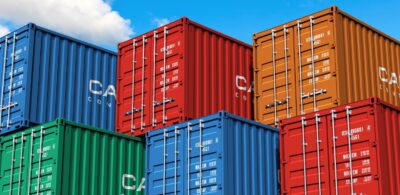International arbitration: can adverse inference fill the gap created by missing evidence?
25 July 2022
Document production is one of the more controversial topics in international arbitration and one on which practitioners from different jurisdictions often disagree. For practitioners from common law jurisdictions, a party’s ability to obtain documents through discovery is an essential element of justice. For practitioners from civil law jurisdictions, the idea that a party should be required to produce swathes of documents, whether they be material to the issues in dispute or not, may seem more like an anathema to justice.
The difference in views is linked to the different legal approaches to fact finding across the common and civil law jurisdictions.
The approach adopted in international arbitration lies somewhere in the middle — it is an amalgamation of the common law and civil law traditions, reflecting the transnational nature of international arbitration.
When it comes to fact finding through document disclosure, the standard approach is set out in the International Bar Association’s (IBA) Rules on the Taking of Evidence in International Arbitration, the most widely used soft law instrument in international arbitration. That standard approach limits the obligation to produce documents, and the power of tribunals to order document production, to only specific documents or narrowly defined categories of documents which are shown to be ‘relevant’ and ‘material’ to the issues in dispute.
But what happens if a party refuses to produce documents found by a tribunal to be ’relevant’ and ‘material’ to the issues in dispute, or produces some but holds back others which are harmful to its case? This is not an uncommon scenario. Yet, an international arbitration tribunal does not have the coercive powers of a national court to compel a party before it to produce unfavourable documents.
For example, an arbitral tribunal cannot hold a party in contempt for failing to comply with a document production order, strike out a claim, defence or evidence (unless the parties have agreed that the tribunal shall have that power), and in many cases it does not even have the power to impose monetary sanctions for non-compliance.
So what are the tools available to an arbitral tribunal to convince a party before it to produce unfavourable evidence? Aside from awarding costs to the non-producing party (which rarely seems to be effective), the main power held by arbitral tribunals to respond to a party failing to produce requested documents is to draw an adverse inference against that party, i.e. broadly to infer that withheld evidence is unfavourable to the withholding party’s case.
While the existence of this power is almost universally accepted, institutional rules and arbitration awards give little insight into the practical effect of an adverse inference, particularly on the burden of proof. In this Insight, we unpack the power of arbitral tribunals to draw adverse inference against a party that refuses or fails to produce relevant and material documents, and consider whether this power has ‘teeth’ in deterring non-production.
Background
Arbitral tribunals frequently require parties to the arbitration to produce documents that are relevant and material to deciding the matter. The tribunal may have this power under:
- Agreement between the parties. As arbitration is a consensual process, the arbitration agreement may provide that the tribunal can order the production of documents or this may be agreed by the parties during the arbitration itself;
- Institutional rules which govern the arbitration. For example, the ACICA Expedited Arbitration Rules allow the arbitrator to order a party to produce documents (article 24.5); and/or
- Statute. For example, arbitral tribunals in a domestic arbitration may make interim orders for the discovery of documents under the uniform Commercial Arbitration Acts (CAA) if the parties have not otherwise agreed to ‘opt out’ of this provision (section 17(3)(b) of the CAA (Vic)).
There is limited discussion within the arbitration community on the orders available to an arbitral tribunal to compel a party to produce documents. This may be, in part, because most arbitration-friendly jurisdictions have legislation which allows parties to be compelled to do so. For example, the domestic Commercial Arbitration Acts allow state Supreme Courts to issue a subpoena requiring a person to produce documents to the tribunal upon application of any party (section 27A(1)(b) of the CAA (Vic)). This is also provided for in the International Arbitration Act 1974 (Cth) (section 23(3)(b)).
But what if resorting to court is not available or preferred?
Outside of court intervention, if a party fails to produce documents ordered by a tribunal, the primary means of enforcement intended to compel production is permitting the tribunal to draw an adverse inference.[1]
This power is universally accepted, whether it be expressly conferred (by agreement of the parties, in the applicable arbitration rules or in the law applicable to the arbitration) or not (as it is a necessary part of arbitrators’ authority to determine the admissibility, relevance, materiality and weight of evidence under, e.g. article 19(2) of the UNCITRAL Model Law). It is also expressly stated in the IBA Rules on the Taking of Evidence, which provide that if a party fails to produce a document ordered to be produced without satisfactory explanation, the tribunal “may infer that such document would be adverse to the interests of that Party” (article 9(6)).
While the existence of the power itself is uncontroversial, there is less clarity regarding the requirements which must be met for adverse inference to be drawn from non-production, and what precisely the content of an adverse inference can be.
Requirements for drawing adverse inferences
There is no universal test that arbitrators must follow when drawing adverse inference. However, it is generally accepted in the arbitration community that several requirements must be met before adverse inference can be drawn.[2]
First, the party requesting the production of a document or a category of documents should have produced material evidence regarding the disputed issue to which the document sought relates. A tribunal may refuse to draw an adverse inference if the requesting party has failed to produce consistent evidence during the arbitration or has access to evidence that relates to the inference it is seeking and fails to produce this evidence. For example, in ConocoPhillips v Venezuela (ICSID Case No ARB/07/30), an arbitration before the International Centre for the Settlement of Investment Disputes (ICSID), the tribunal held that no adverse inference could be drawn regarding alleged misrepresentations in contractual negotiations because both parties failed to provide evidence of those negotiations.
Second, the documents sought should be capable of being produced by the non-producing party. The tribunal must be satisfied that the non-producing party has, or should have, access to the requested documentation. If the non-producing party has an acceptable explanation for why they cannot produce the documentation, the tribunal is unlikely to draw an adverse inference.
Third, the non-producing party should have been aware of the possibility that the tribunal could draw an adverse inference. This requires giving the party the opportunity to produce the documentation before drawing an adverse inference.
Content and impact of adverse inferences
It may be tempting to believe that an adverse inference constitutes a party being ‘punished’ by the tribunal when determining the merits of the case or when drafting the final award. This approach would see the tribunal inferring that the non-produced document contains content damaging to the non-producing party’s case.
For example, if the tribunal has ordered the production of documents supporting the non-producing party’s claim that a set of circumstances exist and it is not produced, the adverse inference would be that the set of circumstances do not exist to the detriment of the non-producing party’s case.
In practice, however, this type of punitive inference is rarely drawn and where it is, it is often watered down.
While the content of adverse inference will entirely depend on the facts, there are some general principles that will guide tribunals in terms of the adverse inference that it can draw. It is often said that adverse inferences can only be made where the inference is reasonable, supported by prima facie evidence and consistent with the evidentiary record. What does this mean practically?
First, an adverse inference cannot be made on the basis of mere suspicion or intuition of the tribunal. This is particularly true where the inference is unusual or punitive to the non-producing party. The reasonableness of the inference drawn will often reflect the tribunal’s understanding of the parties’ commercial practice, the other evidence provided during the arbitration and the importance of the document.
Second, an adverse inference must be consistent with the facts already established. This makes adverse inferences specific to the facts of the case, as they do not operate in isolation but must be made in accordance with evidence already presented before the tribunal.
For example, in Metal-Tech v Uzbekistan (ICSID Case No ARB/10/3), an ICSID tribunal drew an adverse inference against the claimant that no legitimate services were performed by certain consultants during the establishment of the claimant’s investment. This is because the claimant did not produce adequate documents relating to services performed by the consultant as ordered by the tribunal.
The claimant did produce some limited documents, but the tribunal considered that they suggested no legitimate services were performed by the consultants at that time. Therefore, the adverse inference was made by reference to other evidence submitted to the tribunal.
Third, there must be a logical connection between the likely nature of the documents which have not been produced and the inference being made. An example of these issues in practice is found in INA Corporation v The Government of the Islamic Republic of Iran ((1985) 8 Iran-US CTR 373).
The respondent argued that the claimant was not entitled to compensation for the expropriation of its shares in an Iranian insurance company because it had a negative net worth. To support the company’s valuation, the respondent produced an audit report which contained footnotes indicating unorthodox accounting practices.
At the claimant’s request, the tribunal ordered the respondent to produce the financial documents which informed the audit report but the respondent refused. Therefore, the tribunal applied the adverse inference that, without examining the documents referred to in the footnotes, the tribunal could not evaluate the result of the audit and so the document had no evidentiary value.
This example shows a reasonable inference made from a logical connection between the non-produced documents and inferred meaning. The tribunal did not infer that the company did not, in fact, have a negative net worth as claimed by the respondent, instead only inferring that the audit document did not support this claim.
Impact of adverse inferences on the burden of proof
It is trite to observe that in international arbitration, just as before national courts, the party holds the burden of proof for any facts it wants to establish to support its claim.[3] But of course there are occasions in which the party carrying the burden of proof is unable to discharge it without evidence in possession by the opposing party. That is where the power to draw adverse inference steps in. The gap caused by the missing evidence is filled by the adverse inference drawn by the arbitral tribunal.
It is important not to confuse the concepts of adverse inference and the burden of proof. Upon drawing an adverse inference, the burden of proof does not shift to the party who has the adverse inference made against them. As described by one commentator, the drawing of adverse inference is “a mental process by which the arbitrator fills the gap of missing direct evidence with a complex gap-filler comprised of different elements”.[4]
It is important to remember that even if a tribunal issues an adverse inference, this may not fulfil the other party’s burden of proof to establish the particular fact. One party’s failure to comply with an order to produce evidence and an adverse inference issued in response does not mean that the other party is relieved of the burden of proving a claim through other means.[5]
For example, in ICSID decision OPIC Karimun v Venezuela (ICSID Case No ARB/10/14), the claimant argued that Venezuela’s Investment Law constituted consent to ICSID jurisdiction, providing witness statements from a former Venezuelan government official to support this claim.
The witness stated that the government had prepared an administrative dossier concerning the Investment Law. The respondent failed to produce documents regarding the drafting of the Investment Law and so the tribunal made an adverse inference that the documents requested did not support the respondent’s position that Venezuela had not consented to ICSID jurisdiction. The tribunal considered that the evidence suggested the documents requested by the claimant did exist and that the respondent had failed to provide a convincing reason why they had not been provided. However, the tribunal stated that “such inferences fall well short of the direct evidence that would be needed to establish intent in the face of the ambiguities of the Investment Law” and therefore, without direct evidence, the inference alone did not establish that Venezuela intended to consent to ICSID jurisdiction.
This case illustrates how an adverse inference sits within the wider pool of evidence before the tribunal and is not always sufficient to establish an argument put forward by the other party to result in a decision against the non-producing party’s interest.
Concluding observations
A 2011 survey of the International Chamber of Commerce (ICC) awards concluded that “arbitral tribunals are in fact pretty reluctant” to rely on adverse inferences when making a decision on an issue, with nearly 60% of cases where a party asked the tribunal to make an adverse inference involving the tribunal refusing to do so because the inference was not necessary to reach its conclusion.[6]
In the same survey, it was found that 53% of adverse inferences were requested for non-production of documents by the other party. Similarly, a 2015 article on adverse inferences in ICSID practice concluded that “[a]dverse inferences are infrequently requested by parties and even less frequently granted by tribunals”.[7]
These statistics have led some to question the ability of the threat of adverse inference to deter parties from withholding evidence. The same has led to calls for reform and strengthening of the impact of adverse inferences.
Be that as it may, parties should be aware of adverse inference as a tool available to arbitral tribunals and to them when faced by a party that refuses to produce documents unfavourable to their case. As a number of awards shows, far from being a vague sanction for non-compliance with a document production order, adverse inference can be a genuine mechanism that fills a gap in a case otherwise incapable of being proven.
[1] Tribunals may also be able to impose monetary sanctions on the non-compliant party or order the non-compliant party to bear the costs of the arbitration but these are considered to be less effective tools in compelling compliance with document production orders.
[2] Jeremy Sharpe, ‘Drawing Adverse Inferences from the Non-production of Evidence’ (2006) 22(4) Arbitration International 549.
[3] Ibid 552; Alan Redfern, ‘The Practical Distinction between the Burden of Proof and the Taking of Evidence – An English Perspective’ (1994) 10 Arbitration International 317, 321.
[4] Guilherme Rizzo Amaral, ‘Burden of Proof and Adverse Inferences in International Arbitration: Proposal for an Inference Chart’ (2018) 35(1) Journal of International Arbitration 1, 11.
[5] See William J Levitt v Iran (Award) (Iran-US Claims Tribunal, Case No 210, 29 August 1991) [109]; Apotex v United States (Award) (ICSID Case No ARB(AF)/12/1, 25 August 2014) [8.72].
[6] Simon Greenberg and Felix Lautenschlager, ‘Adverse Inferences in Arbitral Practice’ in Stefan Kroll et al (eds) International Arbitration and International Commercial Law: Synergy, Convergence and Evolution (Kluwer Law International, 2011) 179, 179, 184, 189–90.
[7] Michael Polkinghorne and Charles B Rosenberg, ‘The Adverse Inference in ICSID Practice’ (2015) 30(3) ICSID Review 741, 751.
Authors

Head of Arbitration
Associate
Tags
This publication is introductory in nature. Its content is current at the date of publication. It does not constitute legal advice and should not be relied upon as such. You should always obtain legal advice based on your specific circumstances before taking any action relating to matters covered by this publication. Some information may have been obtained from external sources, and we cannot guarantee the accuracy or currency of any such information.



